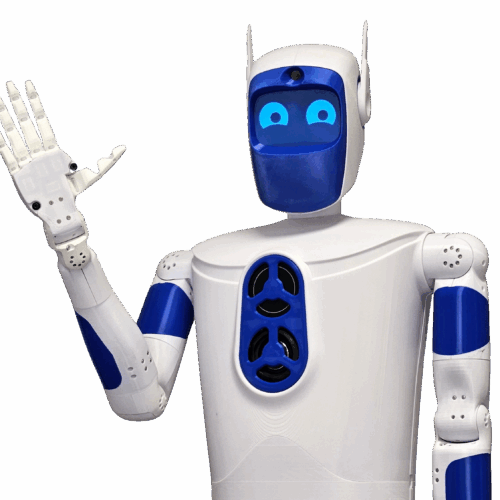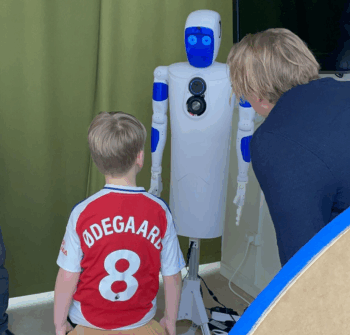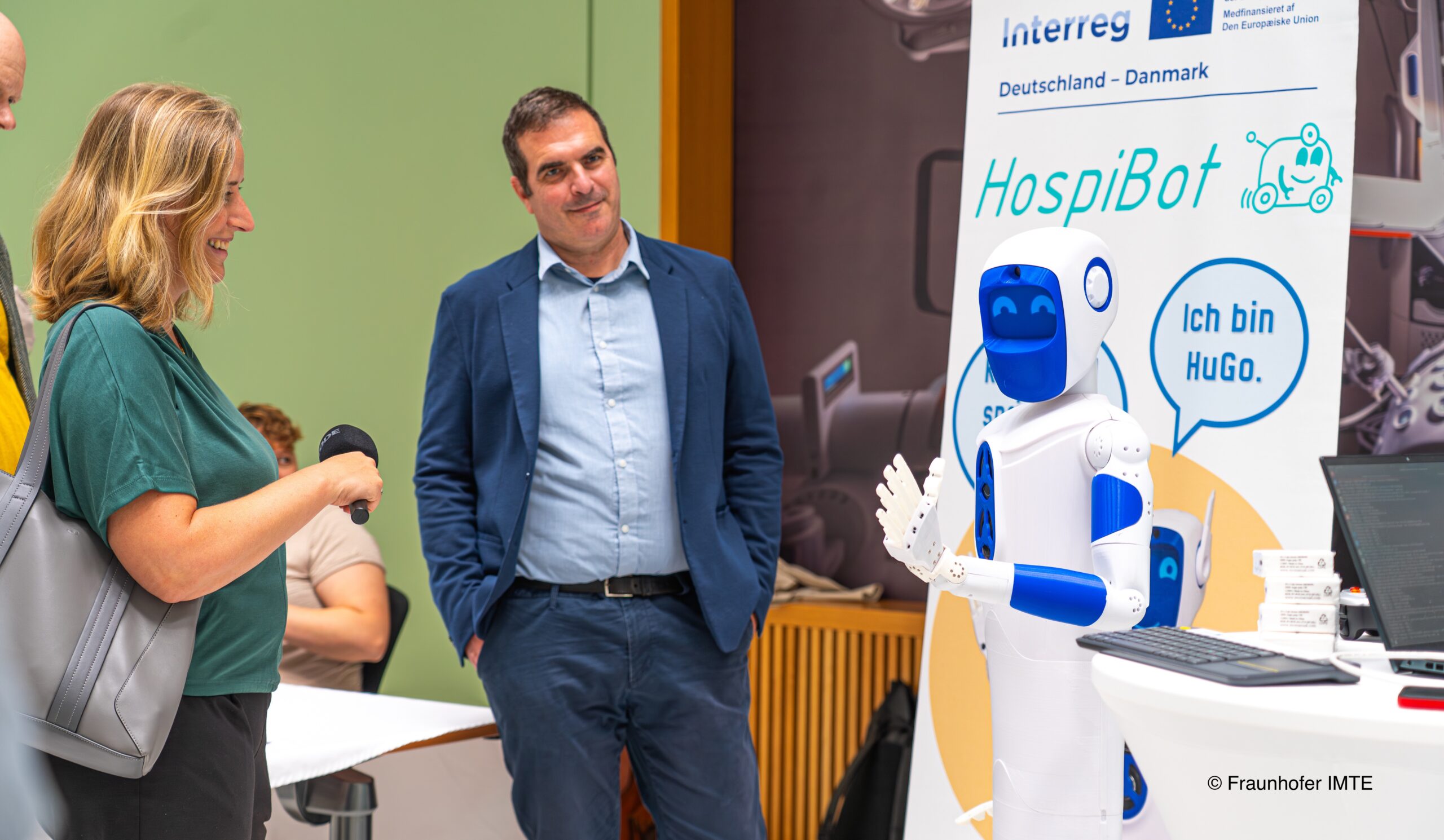HuGo is a modular humanoid robot developed at the University of Southern Denmark (SDU). He has already been showcased at events like the International Conference on Social Robotics 2024 in Odense, Denmark and the Human Robot Interaction Conference 2025 in Melbourne, Australia. HuGo also travels to various public events centered around robotics and German-Danish innovation. Wherever HuGo shows up, he is a real eye-catcher for visitors of all ages.Under the guidance of HospiBot project leader Oskar Palinko, students from the Robotics Engineering as well as Product Development and Innovation program continuously refine both HuGo’s functions and its appearance.
What makes HuGo that popular?
HuGo is trained to co-create unique fairy tales with children. Those stories always turn out new and they are often filled with suprises and laughter. With a dynamic voice modulation and expressive movements of his arms and eyes, HuGo brings stories to life. But it’s not just about storytelling. HuGo is built from over 40 interchangeable parts, making it easy to swap out features like ears in a matter of seconds. This modular design draws curiosity from visitors interested in mechanical aspects of robotics.

Which tasks is HuGo supposed to fulfill in a hospital?

One of HuGo’s primary roles at the hospital is to greet arriving patients and visitors and to guide them where they need to go. This is the robots core task that led its development. But HuGo has more to offer. Thanks to its ability to interact with children and co-create positive fairytales with them, it can be used to brighten the stay of young patients at the hospitals’ childrens’ department. In addition, HuGo will soon be able to transport small items which fit in its hands.
How does HuGo work?
HuGo works with different technologies. It’s speech is generated by a version of ChatGPT. That type of generative AI allows natural, human-like conversations. To ensure that these interactions remain helpful and safe, HuGo is programmed to only provide information that is reliable. Therefore we need to define strict limits of the interactions.
Behind the scenes, HuGo uses the Robot Operating System (ROS). This is a flexible software framework that coordinates all of the robot’s components. Its various functions are programmed mainly in Python and C++, allowing developers to fine-tune its behavior and integrate new capabilities over time. For example, the robot can detect people and follow them with eye and head movements. This kind of responsive behavior helps build a sense of presence and attention in conversations.
Even HuGo’s physical design supports natural communication: its fingers are made from a soft, elastic material that can be controlled with just a few actuators. This makes small gestures possible, contributing to a more lifelike impression.
What’s coming next for HuGo?
A key area of development is HuGo’s mobility. The mobile base is currently being tested and will soon allow the robot to physically guide people to their destinations. This opens up new possibilities for testing the robot at hospitals with real patients and visitors. That is what we will spend even more time on in the upcoming project period: Testing HuGo’s abilities and usability in real hospital settings. These encounters provide valuable insights. It will be an incremental process of continuously improving and adjusting the robot. At the same time, we are working to make HuGo’s behavior even more lifelike. By fine-tuning its speech, gestures, and facial reactions, we aim to create a communication experience that feels as natural and comforting as possible.
About the author

Oskar Palinko
Hi, I am Oskar! As the coordinator of this project I am responsible for the general workflow and deliverables we need to produce. It has been an amazing experience to interact with such a diverse group of colleagues as we are working on deepening the collaboration between hospitals, universities and companies on both sides of the Danish-German border.

Wiebke Behrens-Focken
Hi! Im part of HospiBot’s external communications team. My aim is to make the complex work behind our research project understandable and accessible to a broader audience. That way I can raise awareness of intelligent technologies like robots, foster trust in their use, and encourage public dialogue about their role in healthcare and society.

